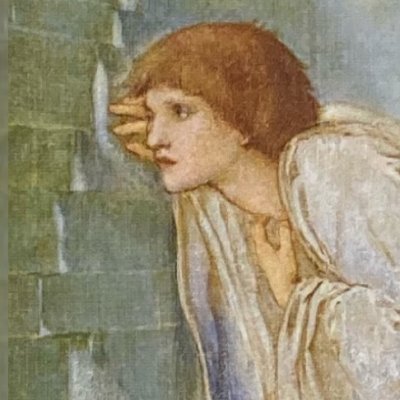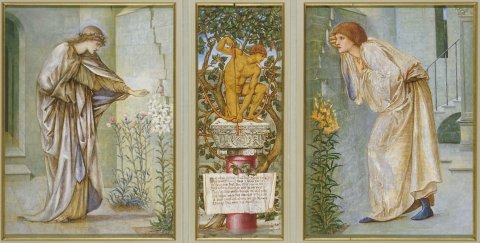Pyrame and Thysbe (Williamson version) - E. C. Burne-Jones
Description
E. C. Burne-Jones draws inspiration from the 2nd of 6 short stories in Chaucer's "Legend of Good Women", itself taken from Ovid. Pyramus and Thisbe are forbidden to marry, and can only communicate through a crack in the wall. The scene depicted by Burne-Jones shows Thisbé, left, discovering a message left by Pyrame.
The story has a tragic ending: Thisbé is frightened by a lion and drops her headdress. The lion covers her in blood and, on finding her, Pyramus, believing her dead, commits suicide. Thisbé discovers the body of her lover and in turn commits suicide.
The triptych form recalls the Quattrocento pieces Burne-Jones had recently admired in Italy.
- In the center, an excerpt from Chaucer reads:
But what is that that love cannot espie
ye lovers two if that I-shall not lie
Ye founden first this little narrow dift
And with a sound as soft as ant shrift
They let their words through the cliftè pace
And tolden while they standen in the place
All their complaint of love and all their woe
At every time when they durstè so
(But what is there that love cannot see?
These two lovers, for I do not lie,
Having first found this narrow little cleft,
In a low voice like that of someone confessing,
Sent their words through the cleft at full speed,
And told, as they stood there in that spot,
All their tale of love and all their sorrows,
At every time when they dared to do so.)
Technical Data
Notice #024957



